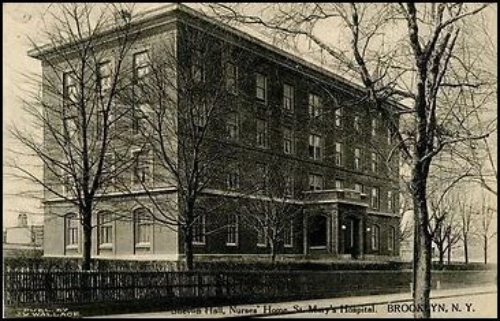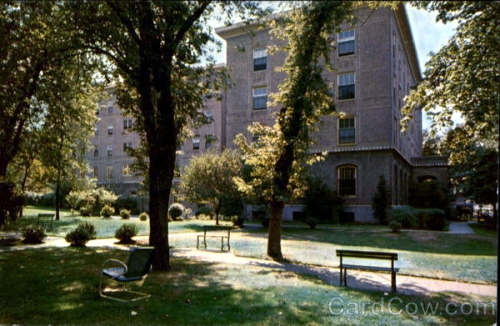Building of the Day: 1260 St. Marks Avenue
Editor’s note: An updated version of this post can be viewed here. Brooklyn, one building at a time. Name: Shevlin Hall Nursing School and Residence, now housing Address: 1260 St. Marks Avenue Cross Streets: Corner of Rochester Avenue Neighborhood: Crown Heights North Year Built: 1914 Architectural Style: Renaissance Revival Architect: Unknown Landmarked: No The story:…

Photo via GoogleMaps
Editor’s note: An updated version of this post can be viewed here.
Brooklyn, one building at a time.
Name: Shevlin Hall Nursing School and Residence, now housing
Address: 1260 St. Marks Avenue
Cross Streets: Corner of Rochester Avenue
Neighborhood: Crown Heights North
Year Built: 1914
Architectural Style: Renaissance Revival
Architect: Unknown
Landmarked: No
The story: The first Catholic bishop of Brooklyn, John Laughlin, supervised the opening of the original St. Mary’s Hospital in 1867. It was in Cobble Hill, and was built specifically to serve the medical needs of women. Fifteen years later, it had outgrown its facilities, and a new home was sought. By then, Eastern Parkway had been laid out, in 1874, and that magnificent stretch of road was helping to lead developers and new homeowners to Crown Heights. The neighborhood was already gaining ground as a great place for large social institutions such as orphanages and hospitals, so the block of St. Marks Avenue, between Rochester and Buffalo was deemed a perfect place for the new 241 bed St. Mary’s Hospital, which was begun in 1879, and opened for business in 1882. The new hospital was one of the many fine buildings designed by Patrick Kelly, America’s foremost architect for the Catholic Church in the late 19th century.
St. Mary’s, like most hospitals, also had a nursing school, where women not only learned the skills of the nursing profession, but also lived on site. In 1914, Shevlin Hall, the nursing school building at St. Mary’s, was finished. It would eventually become both the original four story building facing St. Marks Avenue, plus an annex of almost the same size running along Rochester Avenue. Below are postcards showing the original building in 1915, as well as the complex a bit later, with landscaping on the grounds.
St. Mary’s Hospital, which is on the far eastern side of Crown Heights, was technically in the community of Weeksville, and must have been a part of that historic black middle class community, at least one would hope so. Not too far away from this hospital, also on St. Marks Avenue, at Albany Avenue, was the large boy’s orphanage called the St. John’s Home for Boys, also run by the Catholic Church, which was a large presence in this mostly German and Irish Catholic neighborhood. Just west of the Boy’s Home stood the mansions and fine townhouses of the St. Marks District; one of the most expensive areas of Brooklyn in the early 20th century.
The 1970s saw many local hospitals go through great changes as health care facilities slowly died out in poor communities. Many hospital boards seemed to think that razing the old gloomy Victorian buildings and building modern (and usually awful) concrete hospital bunkers would somehow bring these facilities out of impending bankruptcy, a move that seems to be largely unsuccessful. In that spirit, the original Kelly building was razed and replaced by a representative of the Brutalist School. The Shevlin Building was left alone, amazingly.
But it didn’t help. The hospital was now owned by St. Vincent’s Medical Center and in 2005, they closed the doors forever, citing the constant hemorrhage of money, but in the process depriving the community of its hospital, and much needed jobs. The main hospital building is still sitting there, unused and sealed. It made headlines during the AY deal, when it was rumored that Ratner wanted to rehab or replace the hospital in order to comply with the affordable housing component of AY.
Most recently, Shevlin Hall has been rehabbed as affordable housing. The building, which was empty and shuttered, has been totally renovated and has new landscaping. It looks great. GMAP
(Above photo: Googlemaps, 2011)














I love reading about the transformation some of this buildings go through. Thanks, MM.
I love reading about the transformation some of this buildings go through. Thanks, MM.